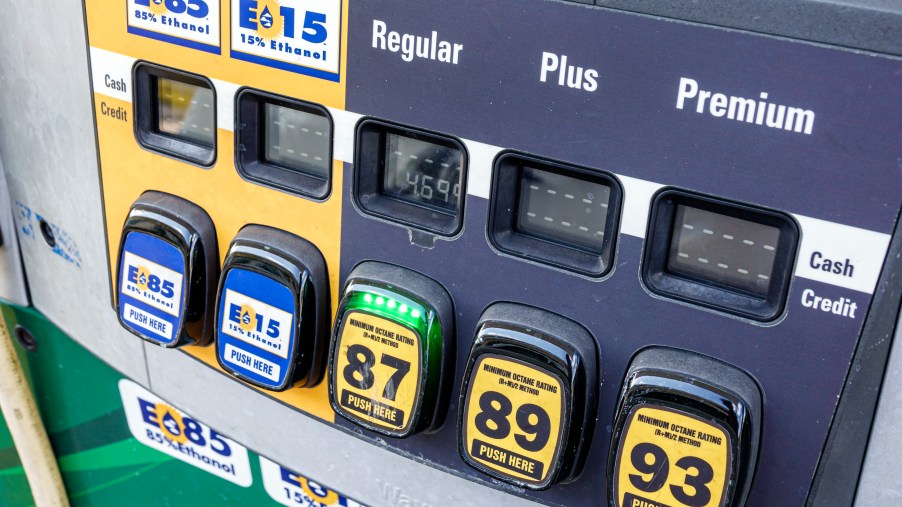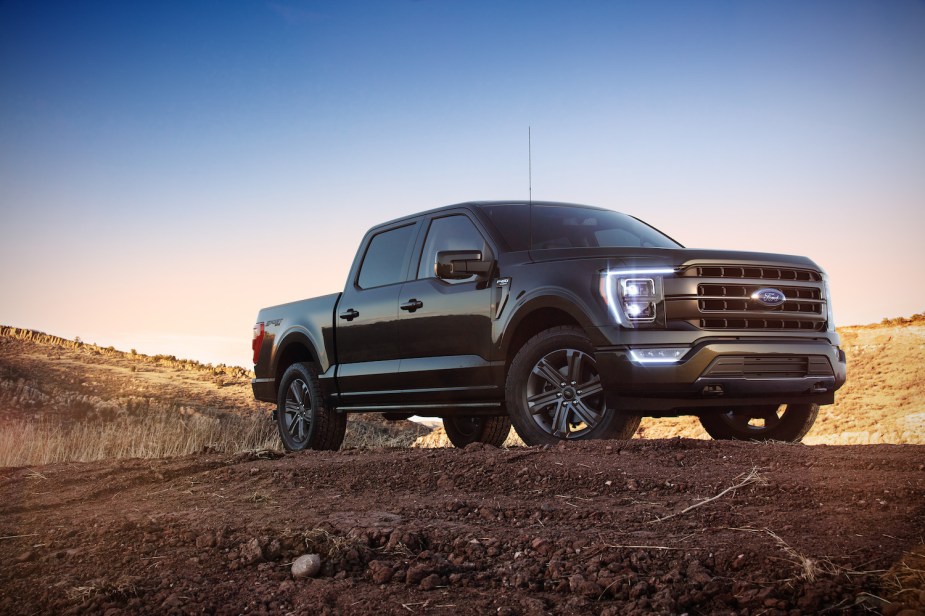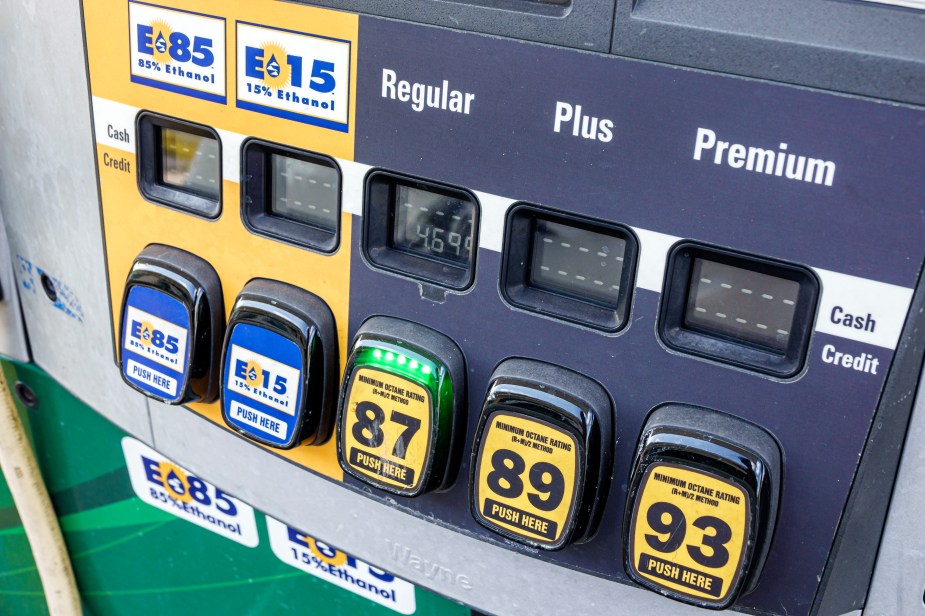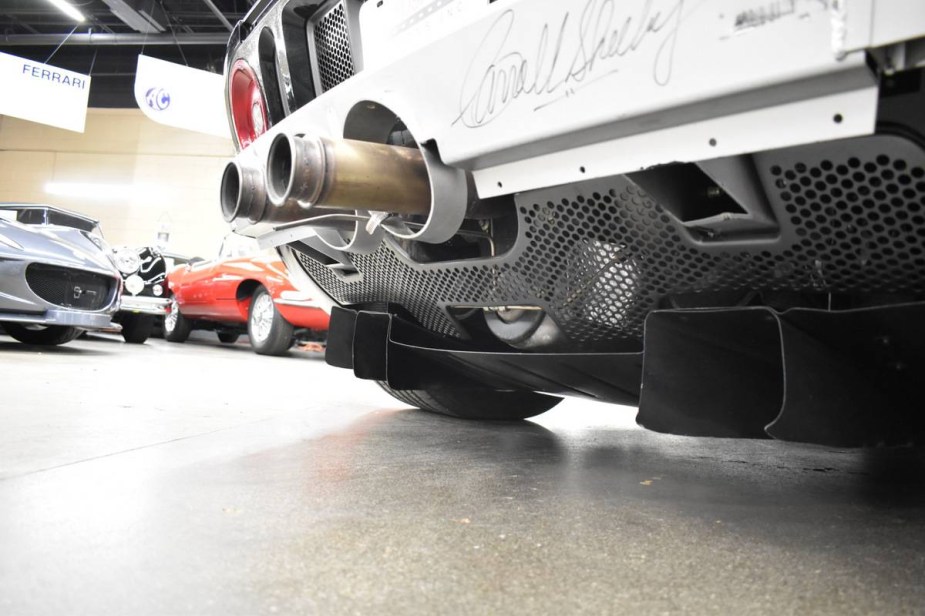
What Is a Flex Fuel Vehicle and Does It Matter?
You’ve no doubt seen the little badge on the back of a Ford or Chevy Truck that says “Flex Fuel” and wondered, “What are they flexing?” If you don’t have a flex-fuel vehicle, you’ve probably not thought much about what flex fuels are and if you should be using them. A flex-fuel is one that has had ethanol, derived from corn, added to it and is not a biodiesel fuel. Many gas stations sell E85, or less commonly, E40 or E60 fuels, and those are flex fuels.
What vehicles can use flex fuel?

Today only a few vehicles are designated flex fuel vehicles. They are all heavier-duty haulers like trucks and vans. According to the Environmental Protection Agency, there are only a few 2022 trucks and vans that are still using the flex fuel designation. The 2022 Silverado, GMC Sierra, Ford’s Transit T150 and F-150 truck, Ford Explorer FFV, Ford Transit Connect Van FFV, are the only ones listed at FuelEconomy.gov. But, those are popular vehicles so there are a lot on the road.
The first Ford Model T could run on ethanol or gasoline, and more than 8 million cars and trucks on American roads are flex-fuel vehicles today. Don’t put E85 in a vehicle not designed for it.
Does flex fuel mean better gas mileage?
A flex-fuel designation could mean a slight increase in gas mileage, but not always. Ethanol has less energy per gallon than pure gasoline, so some will find themselves pushing the gas pedal more to get the same performance, decreasing mileage. The EPA says that fuel economy on E85 is 20% to 30% less compared to gasoline.
But, that depends on the grade of fuel you buy. E85, for example, is a high-octane fuel that contains between 51% and 83% ethanol. E40 and or E60 blends have less power per gallon than regular gas because of their blends. All cars made after 2001 can run E15. But, all of that depends on your engine and some high-performance engines, like those in NASCAR racers or the new Dodge Challenger can make more power off E85 than gas because of its unique properties.
But, E85 is cheaper at the pump. As a general rule, E85 is about 25% to 33% cheaper per gallon than gasoline, so while you may not get better mileage, you’ll still pay less to drive.
Will flex fuel damage my engine?
You can make your own flex fuel if you know how to ferment, distill, filter and dehydrate raw materials like corn, soy or wheat. We don’t recommend that. But, that’s the basic process that fuel makers go though when they’re making a flex-fuel additive. If that formula sounds familiar, it should. Making ethanol is similar to making booze (but you can’t drink flex fuel).
Because it’s ethanol, it can cause problems with the fuel systems on older cars because the alcohol causes corrosion and other issues. Newer cars, from 2011 on, are designed to run on E15. Every vehicle made since 1980 can run on E10. If your car or truck is designed for it, you can use it.
What is a flex fuel conversion kit?

Most any car truck or van can be converted to run on flex fuel, and it’s not a terribly difficult DIY project. You’ll need, basically, to update your engine’s computer control system. To burn flex fuel, the car has to recognize though its ethanol sensor that it’s filled with flex fuel (or not) and adjust the injectors to compensate. Kit prices run $150 to $1,000, but they are model specific so check to make sure that you’re getting the right one and they’re popular for sports cars.
Do flex fuels cause more pollutants?

All vehicles have to meet emissions regulations, including FFVs. E85 doesn’t evaporate like gasoline, so there are fewer evaporative emissions, and E85 reduces carbon monoxide and benzene emissions. However, it can increase the acetaldehyde (a toxic pollutant) emissions of a vehicle.


